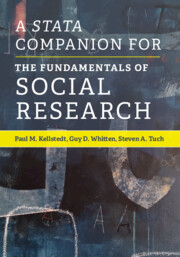Refine search
Actions for selected content:
36856 results in Cambridge Textbooks
Copyright page
-
- Book:
- Australian Property Law
- Published online:
- 19 September 2022
- Print publication:
- 30 September 2022, pp iv-iv
-
- Chapter
- Export citation
Preface
-
- Book:
- Australian Property Law
- Published online:
- 19 September 2022
- Print publication:
- 30 September 2022, pp xxvii-xxix
-
- Chapter
- Export citation
6 - Tenure, estates and future interests
-
- Book:
- Australian Property Law
- Published online:
- 19 September 2022
- Print publication:
- 30 September 2022, pp 245-293
-
- Chapter
- Export citation
9 - Equitable property and priorities
-
- Book:
- Australian Property Law
- Published online:
- 19 September 2022
- Print publication:
- 30 September 2022, pp 428-459
-
- Chapter
- Export citation
10 - Occupation of land
-
- Book:
- Australian Property Law
- Published online:
- 19 September 2022
- Print publication:
- 30 September 2022, pp 460-532
-
- Chapter
- Export citation
Index
-
- Book:
- Australian Property Law
- Published online:
- 19 September 2022
- Print publication:
- 30 September 2022, pp 749-762
-
- Chapter
- Export citation
4 - Security interests in property
-
- Book:
- Australian Property Law
- Published online:
- 19 September 2022
- Print publication:
- 30 September 2022, pp 107-166
-
- Chapter
- Export citation
7 - Indigenous land rights and native title
-
- Book:
- Australian Property Law
- Published online:
- 19 September 2022
- Print publication:
- 30 September 2022, pp 294-361
-
- Chapter
- Export citation
13 - Rights and limits to land use
-
- Book:
- Australian Property Law
- Published online:
- 19 September 2022
- Print publication:
- 30 September 2022, pp 634-710
-
- Chapter
- Export citation
Acknowledgements
-
- Book:
- Australian Property Law
- Published online:
- 19 September 2022
- Print publication:
- 30 September 2022, pp xxx-xxxii
-
- Chapter
- Export citation
Table of cases
-
- Book:
- Australian Property Law
- Published online:
- 19 September 2022
- Print publication:
- 30 September 2022, pp xxxiii-xlix
-
- Chapter
- Export citation
11 - Social and community housing
-
- Book:
- Australian Property Law
- Published online:
- 19 September 2022
- Print publication:
- 30 September 2022, pp 533-576
-
- Chapter
- Export citation
1 - Perspectives on property
-
- Book:
- Australian Property Law
- Published online:
- 19 September 2022
- Print publication:
- 30 September 2022, pp 1-35
-
- Chapter
- Export citation
8 - Real property
-
- Book:
- Australian Property Law
- Published online:
- 19 September 2022
- Print publication:
- 30 September 2022, pp 362-427
-
- Chapter
- Export citation
Table of statutes
-
- Book:
- Australian Property Law
- Published online:
- 19 September 2022
- Print publication:
- 30 September 2022, pp l-lxxxiv
-
- Chapter
- Export citation
Foreword
-
- Book:
- Australian Property Law
- Published online:
- 19 September 2022
- Print publication:
- 30 September 2022, pp v-vi
-
- Chapter
- Export citation

A Stata Companion for The Fundamentals of Social Research
-
- Published online:
- 29 September 2022
- Print publication:
- 08 September 2022
-
- Textbook
- Export citation
Chapter 18 - Reading Guide for Biblical Aramaic and Related Dialects
-
- Book:
- Biblical Aramaic and Related Dialects
- Published online:
- 08 September 2022
- Print publication:
- 29 September 2022, pp 264-354
-
- Chapter
- Export citation
Chapter 2 - Orthography
-
- Book:
- Biblical Aramaic and Related Dialects
- Published online:
- 08 September 2022
- Print publication:
- 29 September 2022, pp 19-26
-
- Chapter
- Export citation
4 - A Tour of Social Science Experiments
-
- Book:
- Social Science Experiments
- Published online:
- 08 September 2022
- Print publication:
- 29 September 2022, pp 42-67
-
- Chapter
- Export citation
